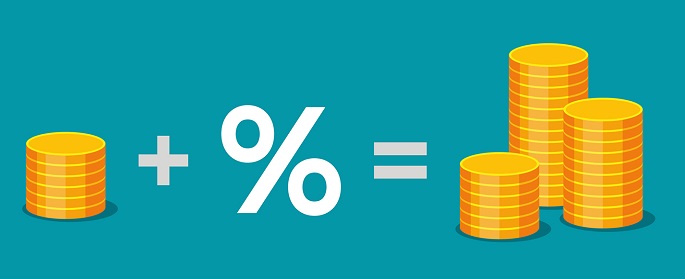Interest rate
Interest rate
An interest rate is either the cost of borrowing money or the reward for saving it. It is calculated as a percentage of the amount borrowed or saved.1
You borrow money from banks when you take out a home mortgage. Other loans can be used for buying a car, an appliance, or paying for education.
Banks borrow money from you in the form of deposits, and interest is what they pay you for the use of the money deposited. They use the money from deposits to fund loans.
Banks charge borrowers a slightly higher interest rate than they pay depositors. The difference is their profit. Since banks compete with each other for both depositors and borrowers, interest rates remain within a narrow range of each other.
Interest Rate Example
If you take out a $300,000 mortgage from the bank and the loan agreement stipulates that the interest rate on the loan is 4%, this means that you will have to pay the bank the original loan amount of $300,000 + (4% x $300,000) = $300,000 + $12,000 = $312,000.
How Are Interest Rates Determined?
The rate charged by banks is determined by a number of factors, such as the state of the economy. A country’s central bank (the Federal Reserve in the U.S.) sets the interest rate, which each bank use to determine the APR range they offer. When the central bank sets interest rates at a high level, the cost of debt rises. When the cost of debt is high, it discourages people from borrowing and slows consumer demand. Also, interest rates tend to rise with inflation.1
To combat inflation, banks may set higher reserve requirements, tight money supply ensues, or there is greater demand for credit. In a high-interest rate economy, people resort to saving their money since they receive more from the savings rate. The stock market suffers since investors would rather take advantage of the higher rate from savings than invest in the stock market with lower returns. Businesses also have limited access to capital funding through debt, which leads to economic contraction.
